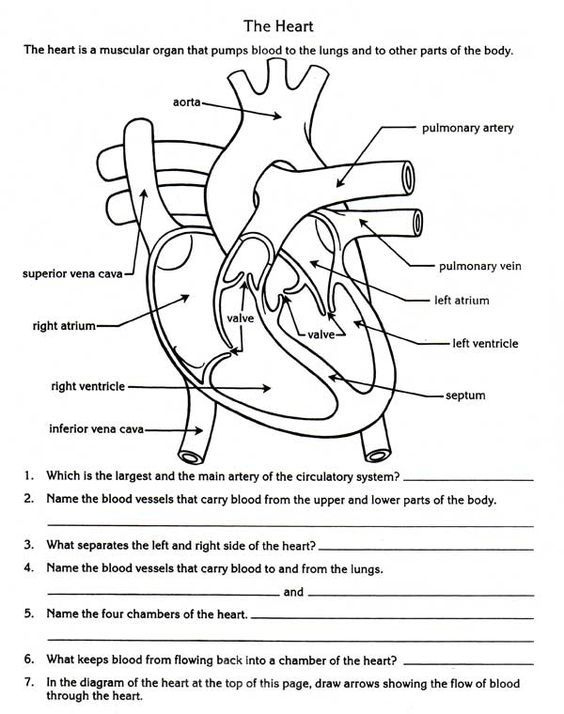The heart is a vital organ that pumps blood throughout the body, delivering oxygen and nutrients to cells and removing waste products. It is divided into four chambers – two atria and two ventricles. The right side of the heart receives deoxygenated blood from the body and pumps it to the lungs for oxygenation, while the left side receives oxygenated blood from the lungs and pumps it to the rest of the body.
The heart is made up of specialized muscle tissue called cardiac muscle, which contracts rhythmically to create the pumping action. The heart is also equipped with a system of valves that ensure blood flows in the correct direction. Understanding the anatomy of the heart is crucial for understanding how it functions in maintaining circulation throughout the body.
Heart Anatomy And Physiology Worksheet
Exploring the Physiology of the Heart
The physiology of the heart involves the intricate coordination of electrical signals that regulate the heartbeat. The heart has its own internal pacemaker called the sinoatrial (SA) node, which generates electrical impulses that stimulate the heart muscle to contract. This coordinated contraction allows for the efficient pumping of blood throughout the body.
Additionally, the heart relies on a network of blood vessels known as coronary arteries to supply oxygen and nutrients to its own muscle tissue. Any disruption in the flow of blood through these vessels can lead to serious heart conditions such as heart attacks. Understanding the physiology of the heart can help in recognizing and addressing potential issues that may arise.
Conclusion
Heart anatomy and physiology are essential components of understanding how this vital organ functions in maintaining circulation and overall health. By familiarizing yourself with the structure and function of the heart, you can gain valuable insights into how to keep it healthy and functioning optimally. Utilizing resources such as heart anatomy and physiology worksheets can aid in reinforcing your knowledge and understanding of this complex organ.
